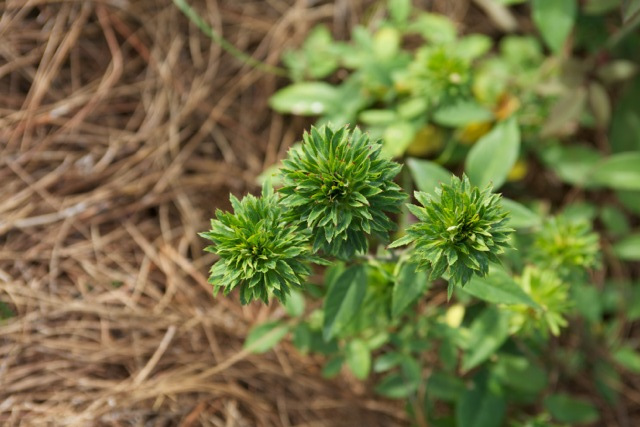The Green Rose
This mutated rose has sepals instead of petals.

Photo by Malcolm Manners
A bit of American folklore suggests that this unusual-looking flower had ties to the abolitionist movement during the 19th century, according to Stephen Scanniello, curator of the Peggy Rockefeller Rose Garden at the New York Botanical Garden.
“Quakers supposedly planted it in their front yards if they were conductors of the Underground Railroad,” he says. “Of course, nobody can verify that, except there is a Quaker family from Baltimore that does claim that that legend is in their family background.”
Underground Railroad beacon or not, this plant is no myth. Known as the ‘Green Rose,’ the verdant flower is a mutated version, or a naturally occurring sport, of a regular looking pink rose called ‘Old Blush’ (a derivative of a species called Rosa chinensis), which originated in China and was brought to Europe and the U.S. in the 1790s, according to Scanniello, who is also president of the Heritage Rose Foundation.
[This is one tomato you don’t want to eat.]
Malcolm M. Manners is a professor of horticulture at Florida Southern College, where he cultivates a few bushes of the green rose, among other flowers. He says that when a normal flower forms, a series of genetic switches causes the plant to first produce sepals (the green flaps that enclose a developing bud), followed by petals, stamens (the male reproductive part), and finally pistils and carpels (the female reproductive organs).
In the case of the green rose, however, “it is apparently getting ‘stuck’ at the sepal-making step,” according to Manners. In effect, those sepals form the “petals” of the green rose. And because it doesn’t go on to produce sexual parts, the green rose is sterile. (The rose can be cultivated by grafting or cutting off pieces of stems and re-planting them to produce new clones, Manners says.)
[Behold, the gargantuan stick insect!]
While rose mutations occur quite frequently, “we don’t have any other examples of a rose in production that makes too many sepals—that’s just not something you would select for,” says Manners. “On the other hand, the mutation to get ‘stuck’ making too many petals is highly desirable—that’s why we have modern roses with lots of petals, rather than just the five petals of their wild ancestors,” he adds. The green rose made the horticultural cut, so to speak, probably because it was pleasant to look at—at least for some people.
Manners isn’t much of a fan, but “I do find it genetically fascinating,” he says. “It is so different, it’s a conversation piece.”
Chau Tu is an associate editor at Slate Plus. She was formerly Science Friday’s story producer/reporter.